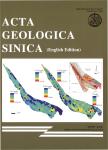Carboniferous-Permian Stratigraphy and Sedimentary Environment of Southeastern Inner Mongolia,China:Constraints on Final Closure of the Paleo-Asian Ocean
Carboniferous-Permian Stratigraphy and Sedimentary Environment of Southeastern Inner Mongolia,China:Constraints on Final Closure of the Paleo-Asian Ocean作者机构:Institute of GeologyChinese Academy of Geological Sciences
出 版 物:《Acta Geologica Sinica(English Edition)》 (地质学报(英文版))
年 卷 期:2017年第91卷第3期
页 面:832-856页
核心收录:
学科分类:070903[理学-古生物学与地层学(含:古人类学)] 0709[理学-地质学] 0819[工学-矿业工程] 07[理学] 0818[工学-地质资源与地质工程] 0708[理学-地球物理学] 0816[工学-测绘科学与技术]
基 金:financially supported by the China Geological Survey(Grant No.12120115070302 121201102000150009 and 12120115070301)
主 题:Carboniferous-Permian stratigraphic sequences southeastern Inner Mongolia Paleo-Asian Ocean
摘 要:In this paper we discuss the timing of final closure of the Paleo-Asian Ocean based on the field investigations of the Carboniferous-Permian stratigraphic sequences and sedimentary environments in southeastern Inner Mongolia combined with the geology of its neighboring areas. Studies show that during the Carboniferous-Permian in the eastern segment of the Tianshan-Hinggan Orogenic System, there was a giant ENE-NE-trending littoral-neritic to continental sedimentary basin, starting in the west from Ejinqi eastwards through southeastern Inner Mongolia into Jilin and Heilongjiang. The distribution of the Lower Carboniferous in the vast area is sparse. The Late Carboniferous or Permian volcanic-sedimentary rocks always unconformably overlie the Devonian or older units. The Upper Carboniferous-Middle Permian is dominated by llttoral-neritic deposits and the Upper Permian, by continental deposits. The Late Carboniferous-Permian has no trace of subduction-collision orogeny, implying the basin gradually disappeared by shrinking and shallowing. In addition, it is of interest to note that the Ondor Sum and Hegenshan ophiolitic melanges were formed in the pre-Late Silurian and pre-Late Devonian respectively, and the Solonker ophiolitic melange formed in the pre-Late Carboniferous. All the evidence indicates that the eastern segment of the Paleo-Asian Ocean had closed before the Late Carboniferous, and most likely before the latest Devonian (Famennian).



